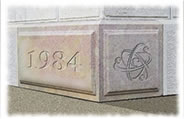The “Discipline of Improvisation”
“Improvisation is too good to leave to chance.”
– Paul Simon
American Singer and Songwriter
(1941 – )
It’s an oxymoron of course, because everyone who’s seen Improv on stage knows there’s no earthly form of discipline in that uncontrolled, free-form combination of humor, self-examination and public excoriation. Or is there?
We like Improv because it implies that somewhere, somehow we might all be able to get up there and “wing it” successfully, leaving the stage with applause ringing in our ears. But wait! Is there more to it? Do you suppose that first “Where you from?” joke was a plant? Do they pay a guy to offer up a known question? Of course not, but in order for “the process” to work, the comic has to memorize fifty jokes about specific cities and twenty generics with insert-able names. That’s for the first riff. And that is some serious discipline.
Each artist has a series of riffs, usually with a specific order and a choice of directions each riff can go, depending on the answers the crowd offers up. Often these riffs adhere to an organizational structure. It’s like playing an entire winning game of chess in advance with all the options allowed for.
Then there’s the delivery: fast, slow, studied; all to give the impression that it just occurred to the speaker. If he’s doing it right, he listens to the other performers, the audience and the unique shared reality they are creating together and honors the First Rule of Improv: “Yes, and Go!” (When you are given a piece of information you must run with it and trust that your training and practice will kick in.) The audience can’t tell that it was largely prepared in advance. It appears magically – just for you! It appears unique. It appears spontaneous. And it is – but not, completely.
And the second show starts in an hour – with the same material. It’s the most disciplined form of theater. It only looks raw. Underneath the surface are three things: a mountain of prepared material, a structure which allows for riffs to be snapped in or out, and endless rehearsal and practice, which makes each riff appear fresh – as if it was conceived in the moment. It’s the “as if” that makes Improv so seductive, so apparently new.
The magic works because the unchanging structure allows the comic to relax and become totally focused on the interaction with the audience, while picking the most appropriate next riff. The comic just relaxes and “places the punch line.” While the audience is digesting and applauding, the comic is selecting the next riff and serving it up, at just the right “unplanned” moment.
Bringing the material, the underlying structure and the soft delivery together is an art – and it’s anything but undisciplined. The improvisation is in choosing which prepared riff comes next, and making it look easy.
Is there a lesson here for anyone not looking for a career at Second City? What can we learn or take from Improv? (Pay attention out there on the phones, in the field and the boardroom!)
- Preplanning makes things go right. If you’re prepared, you can more easily roll with what comes.
- A simple standard structure (Uh, “Ready, Set, Go!”?) means you don’t have to change the system every time you speak. Stick to the format. Change the content, the openings, the props – but leave the structure in place. You’ll never get lost again.
- Rehearse, rehearse, rehearse! It will elevate your delivery and allow your natural style to emerge while freeing your mind to listen and connect.
The content earns you the right to the lectern. A “signature” delivery style gets you remembered; and delivering on your promises gets you invited back!
A little more discipline please! Improvise!
Subscribe to our Newsletter


